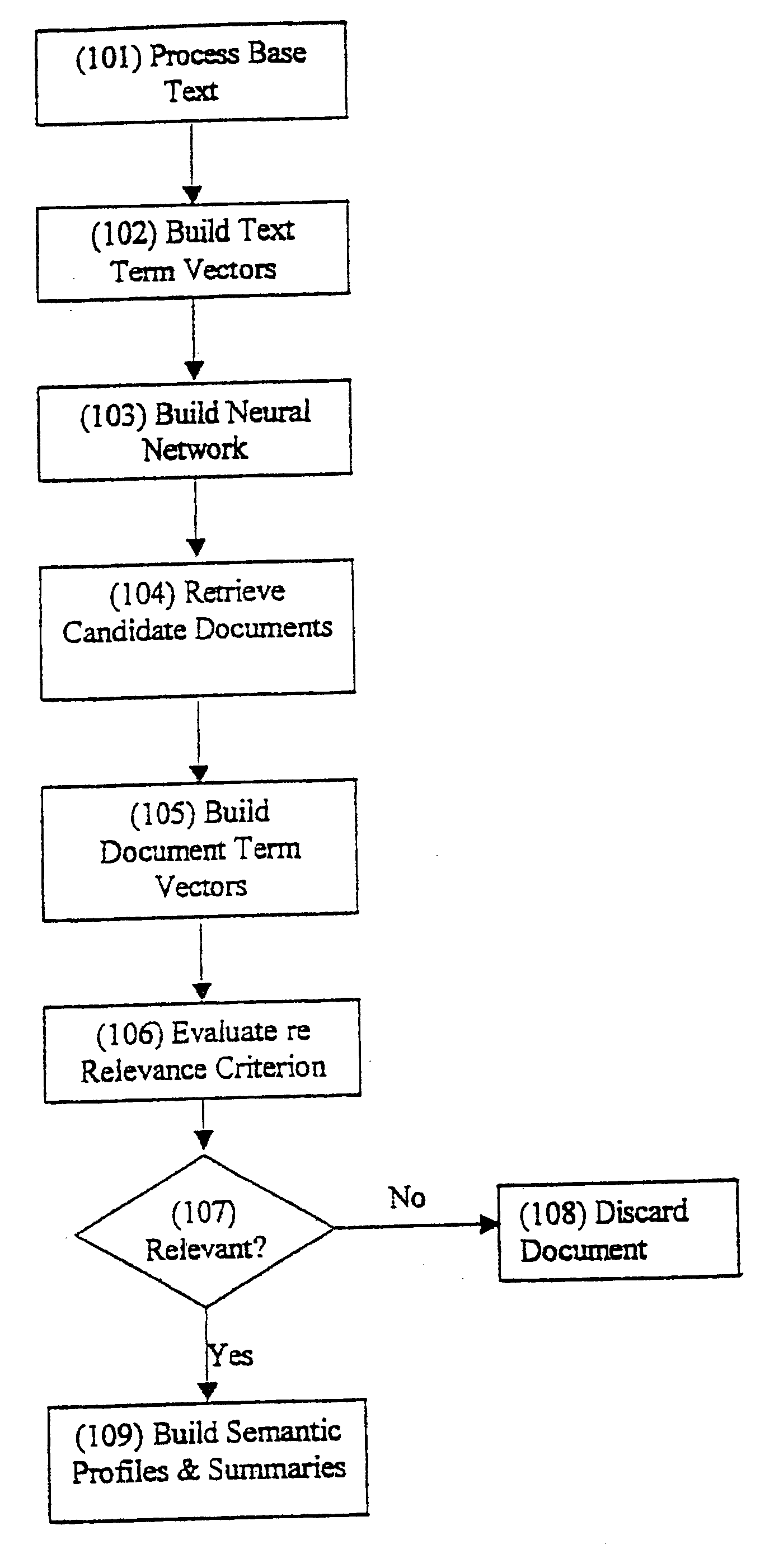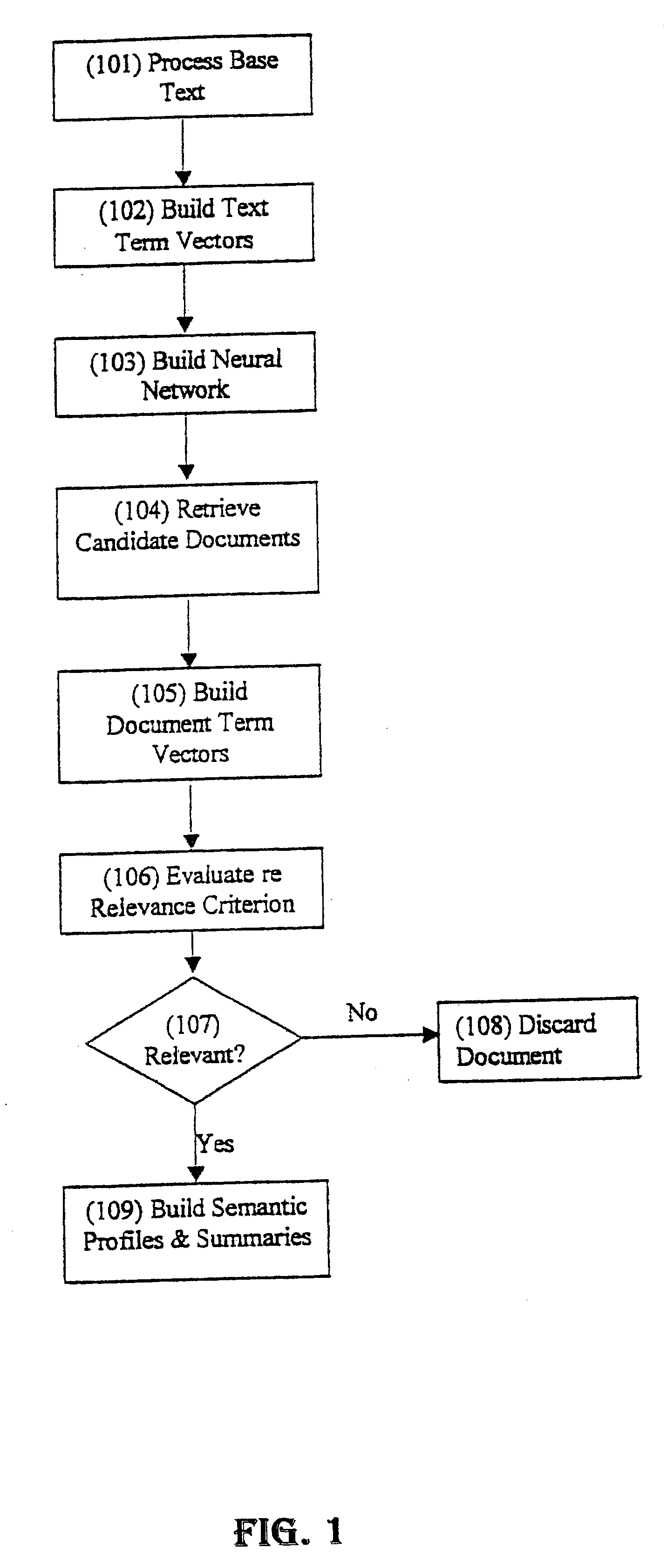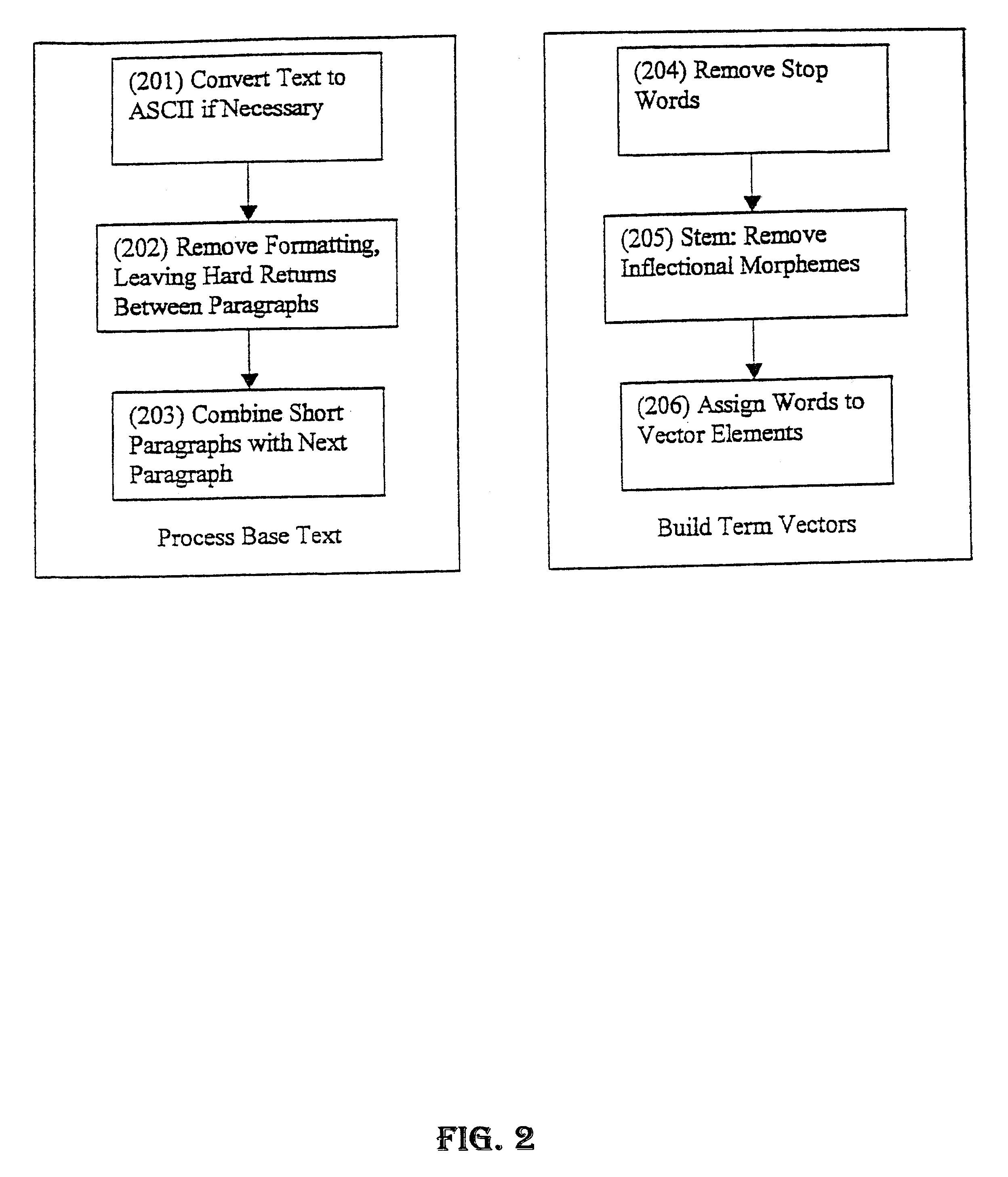Process and system for retrieval of documents using context-relevant semantic profiles
a semantic profile and document technology, applied in the field of process and system for retrieval of documents using context-relevant semantic profiles, can solve the problems of large quantities of documents that cannot be usefully examined by the user, and cannot guarantee the content of the desired information, so as to reduce the time required to answer a query
- Summary
- Abstract
- Description
- Claims
- Application Information
AI Technical Summary
Benefits of technology
Problems solved by technology
Method used
Image
Examples
first embodiment
The first embodiment to be described is based on a neural network that extracts the principal components from the co-occurrence matrix. As shown in FIG. 1, the base text (the text corpus) is pre-processed to remove all formatting and all hard return characters except those between paragraphs (step 101). Very short paragraphs, such as titles are combined with the subsequent paragraphs.
A dictionary (vocabulary) is created that maps word forms and their uninflected stems to elements in a text vector (step 102). The number of unique entries is counted to give the length of the text vector (K), which is set to the number of unique words in the base text. One text vector of length K is constructed for each paragraph of the base text and these vectors are presented to the neural network (step 103) for learning (training).
In this embodiment, the network implements a principal components analysis of the collection of text vectors. This analysis reduces the data representation from a set of s...
second embodiment
Alternatively, one can compare the estimated text vector (also called a result vector) x with each document's text vector and again measure relevance using the dot product of these vectors. Comparing the semantic profiles of queries against the semantic profiles of documents requires that a profile be computed for each of the documents in the document retrieval database. With N in the range of 300-1000 elements, this results in a compact way to store the semantic content of documents. That is, each document would be stored as, say, a vector of 1000 elements. Because most queries are extraordinarily sparse (because searchers enter so few search terms), however, it may be computationally more efficient to compute the result vector and compare a sparse representation of the terms in the document vector with a sparse representation of the result vector. The only documents that need to be evaluated are those containing the terms described by the result vector, so only a few multiplicatio...
PUM
 Login to View More
Login to View More Abstract
Description
Claims
Application Information
 Login to View More
Login to View More - R&D
- Intellectual Property
- Life Sciences
- Materials
- Tech Scout
- Unparalleled Data Quality
- Higher Quality Content
- 60% Fewer Hallucinations
Browse by: Latest US Patents, China's latest patents, Technical Efficacy Thesaurus, Application Domain, Technology Topic, Popular Technical Reports.
© 2025 PatSnap. All rights reserved.Legal|Privacy policy|Modern Slavery Act Transparency Statement|Sitemap|About US| Contact US: help@patsnap.com



